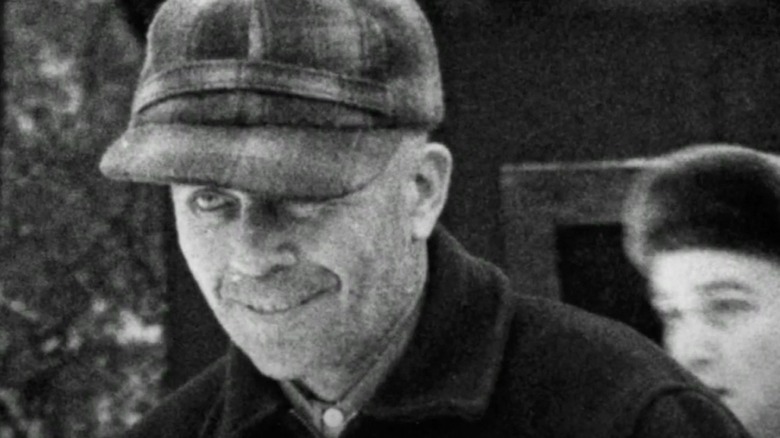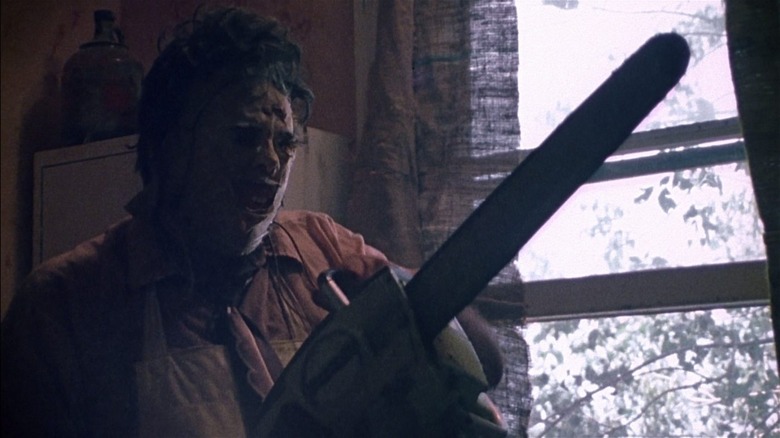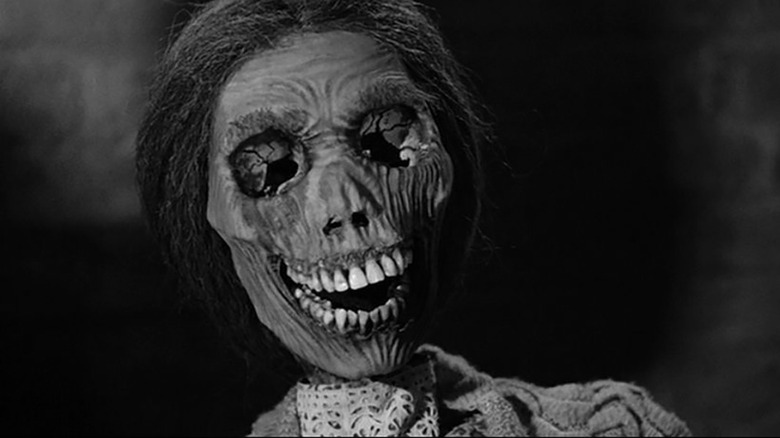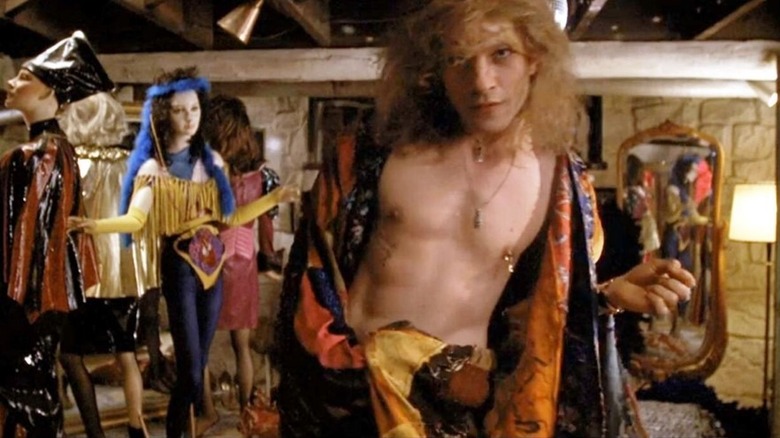How Serial Killer Ed Gein Inspired Classic Horror Movies
In our true crime-obsessed world, serial killers have unfortunately reached icon status. We could debate whether or not the world really needs another Ted Bundy movie until we're all blue in the face, but no serial killer can compare to Hollywood's obsession with the Plainfield Butcher, Ed Gein. A murderer and grave-robbing body snatcher is bound to be newsworthy regardless of criminal circumstance, but the grotesque ways Gein utilized the corpses he collected were so shocking, people couldn't (and still can't) stop talking about it. Gein confessed to at least two murders and was suspected in several others, but was only convicted for the murder of tavern owner Mary Hogan in 1954. Despite his comparatively low body count (to be clear: one is too many), Gein's modus operandi and so-called "house of horrors" have permeated pop culture through the iconic horror films inspired by his real-life crimes.
After images of Gein's Wisconsin farmhouse were made available to the public, creatives were given a blueprint to design the living space of isolated and demented killers and permanently changing the landscape of horror. His unhealthy obsession with his mother led to the creation of Norman Bates in "Psycho," the details of his horrific flesh projects paved the way for Leatherface of "The Texas Chain Saw Massacre," and although frequently debunked, the idea that he was a gender confused crossdresser inspired characters like Buffalo Bill in "The Silence of the Lambs." All three of these films were monumental successes of their own, and inspired plenty of others in their wake.
Gein's gross arts and crafts
I'll admit, I've frequently used the phrase "wants to use my skin as a lampshade" to describe the weird men that send me crude messages on the internet. This expression is rooted not only in what was found in Gein's home, but how slasher films would later interpret his demented habit. 1974 brought "The Texas Chain Saw Massacre" and "Deranged," two films that feature a killer who uses the flesh of others as materials. Otis Driftwood of "House of 1000 Corpses" and "The Devil's Rejects" also reference Gein through Otis' skill of crafting human sculptures for Captain Spaulding's museum.
As for Gein's crafts, authorities found a wastebasket made of human skin, chair seats made of flesh, skull bowls, leg skin leggings, face masks, windowshade drawstrings made of lips, the human skin lampshade, and the belt of women's nipples in addition to a collection of dismembered body parts, bones, and fingernails. His actions were so nightmarish and unbelievable that it sounded like something out of a horror movie, which makes complete sense why horror creatives immediately mined his crimes for inspiration. It was also implied that Gein was a necrophile, as shown in "Deranged," but this claim was never substantiated.
The obsession with his mother wasn't totally accurate
Robert Bloch's novel "Psycho" told the story of Norman Bates, a man with an unhealthy obsession with his mother. Bloch was inspired by Ed Gein, historically remembered for keeping his mother's corpse in the basement and creating a woman's suit inspired by his mother. Filmmaker Alfred Hitchcock became fascinated with the story and crafted his cinematic masterpiece of the same name, but there's one huge problem ...Gein never actually exhumed his mother. It is true that Gein's mother was a religious zealot, highly controlling, and Gein was desperate for her approval, but the portrayal of his obsession in horror films wasn't totally based in reality.
Gein didn't do as Norman Bates did and take on the persona of his mother, but his crimes were rooted in his need for her approval. Around the time of Gein's crimes, psychologists were peddling the idea that a mother's relationship to her son was one of the surefire ways to determine a psychopath. Criminal profiling was just around the corner, and it was commonplace to hear people blame the actions of men on the women who raised them. This concept is still perpetuated even in today's horror, but led to quite possibly the most egregious portrayal of Gein, and sparked a trope that unfortunately has caused genuine harm to marginalized people.
The "crossdressing killer" trope was based on speculation
Gein is also remembered for "wanting to be a woman," with his woman's suit allegedly inspired by a desire to be inside of his mother once again. This trope inspired "Psycho," which inspired "The Silence of the Lambs," which inspired an entire society to believe that transgender women are dangerous predators. The "killer crossdresser" trope skyrocketed in prominence due to Gein and the subsequent success of films inspired by him. Author Grady Hendrix noted that the original "Life" pictorial included a line about Gein wishing her were a woman, despite there not having been a psychiatric evaluation. An armchair psychiatrist who'd never met Gein claimed showed symptoms of "acute transvestitism," but the actual psychiatric profile of Gein included nothing about transvestitism or crossdressing.
When Gein took a polygraph test, operator Joe Wilimovsky asked leading questions about his presumed belief that Gein enjoyed wearing women's clothing, and when Gein said "that could be," it was interpreted that he was definitively transgender. As Hendrix also writes, Gein was highly suggestible and struggled to tell the difference between things that actually happened and things he was told had happened. Combine this all with the increased societal anxiety (see: transphobia and homophobia) that men were becoming "sissies," and suddenly we had the narrative that anyone assigned male at birth who displayed any sort of gender non-conforming desires or habits were equatable to Ed Gein. "And there you have it," said Hendrix:
"A busted psychiatric theory about how mothers made their sons gay and trans got shoehorned into the case against Ed Gein by eager psychiatrists, and it then made it into Robert Bloch's novel based on the Gein case, which wound up in Alfred Hitchcock's hit movie based on Bloch's book, which flowed out like a poisonous river, leaving its rancid traces on dozens, if not hundreds, of serial killer books and slasher movies."



